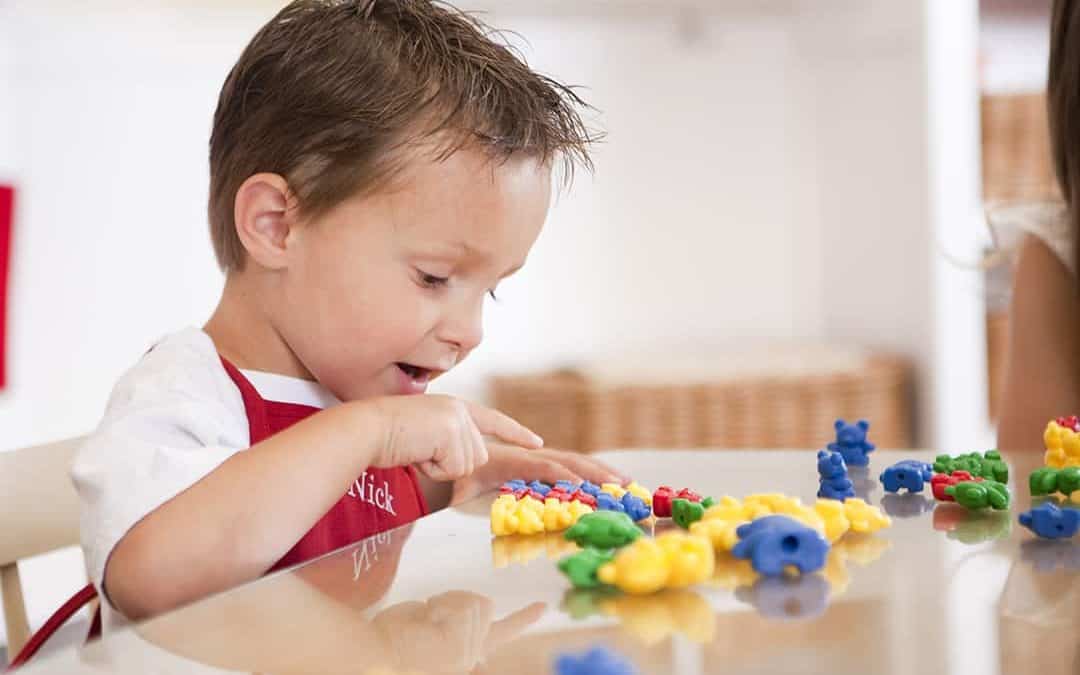At Kids Village, you may have seen that we use bear counters to help teach math to our Sweet Peas, Little Sprouts, and Tater Tots. While bear counters are cute and colorful, we love them for more than just their aesthetics.
Hands-On Learning
These bear counters are called manipulatives. Manipulatives, or “learning through objects” have become more and more important in traditional learning. The this hands-on approach to learning is not only more fun and engaging, it also creates stronger connections between concepts the child is learning and the world around them.
In 2013, the National Council of Supervisors of Mathematics (NCSM) expressed the importance of manipulative in learning. “…in order to develop every student’s mathematical proficiency, leaders and teachers must systematically integrate the use of concrete and virtual manipulatives into classroom instruction at all grade levels.” (NCSM, 2013)
Why use Bear Counters?
Contrary to the name, these bear counters are used for much more than just counting. They’re also used for:
Engaging Students – Interest and focus are very important when teaching young children. These cute, colorful, fun-shaped bears keep students engaged in their lessons.
Sorting – This skill is useful in pattern recognition and comprehension which is important not only for math but for logical thought.
Measuring – Students are asked how many “bears” long something is. While it’s a fun counting game, it also supports learning units of measurement.
Comprehending Basic Mathematical Operations – A student may know by repetition that 1 + 1 = 2, but what does that actually mean? Doing mathematical equations with objects like these counting bears makes math concrete instead of abstract.
Understanding Place Values – Place values can be complicated for small children, but these bears can stack into clean lines of 10 which is a helpful objectification of the concept.
Communicating Mathematical Ideas – Vocabulary is an important part of math, but it can sometimes be a hangup in young children. These bears help them communicate mathematical ideas more effectively by showing what they understand instead of having to communicate it perfectly before they can communicate all the words.
Relationships Between Operations – Manipulatives such as counting bears also help students recognize the relationships between different mathematical operations.
Engaging in Problem-Solving – Students this age are engaged in a plethora of physical problem solving. “What happens when I _______…” “How can I make _____ do _____…?” By teaching math with manipulative, we’re meeting them in their development and teaching them in a way they can easily understand.
Lets Students Become Teachers – While much of our learning is teacher-supported, we also encourage learning through self-explanation. Counting bears allow students to explore mathematical concepts on their own.
Learn more about our passion for hands-on learning in the following article:

